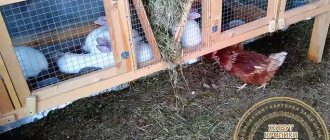The rat is considered one of the most intelligent and cunning species of rodents. And if you are now wincing with disgust and hostility towards this animal, then, most likely, you thought about the inhabitants of garbage dumps and basements, who are capable of carrying a myriad of diseases and infections. Another thing is decorative rodents, which can become an excellent friend for a pet lover in small apartments.
About who rats are, how they behave, what diseases domestic rats have, how to properly care for them, whether it is possible to wash decorative rats and much more - in our article.
Rat as a pet
Whatever animal you choose as a pet, you should remember the responsibility to the animal: it will have to be looked after, fed and loved, regardless of size, activity and type.
Often, future owners of four-legged animals mistakenly believe that if the animal is large, then there is a lot of trouble with it, and if it is small, then it does not require time. But in reality it's not like that. And often a tiny decorative rat requires more care than a huge guard dog. Therefore, if you are not ready to take on a number of responsibilities for caring for an animal, think about whether you want this responsibility or should you wait.
Health
While rats are generally tough little creatures, they are certainly subject to a number of risks. Some of them, such as kidney disease and obesity-related conditions, can be prevented with proper management and diet. Others, such as tumors and respiratory diseases, are a combination of genetic predisposition, exposure and environmental factors. Although an animal may have a large tumor, there are often ways to improve the animal's quality of life even when there is no cure.
Mammary adenomas are the most common mammary tumors in rats and can be found in males and females. Sterilization can significantly reduce their incidence in females. Although they have been reported in rats of all ages, they are most common in animals older than 18 months.
Respiratory illnesses are one of the most common reasons why pet rat owners visit a veterinarian. There are several main causes of infection, including bacterial, viral, fungal and parasitic diseases. Infections often have serious and severe secondary consequences, including pneumonia, abscesses, empyema, pleural effusion, and bacteremia.
Of all the causes of pneumonia in rats, the most common is the bacterium Mycoplasma pulmonis. Clinical signs vary depending on the virulence of the strain, site of infection, age of the animal and concomitant disease. In fact, many owners take their rat to the doctor thinking it has an eye disease and complain that the animal is squinting and bleeding from its eyes. These animals are often clinically ill and may appear lethargic or have poor appetite, poor coat coat, weight loss, stooped posture, and grumpy behavior. Some rats show no signs at all.
Breeds of domestic rats
Today there are 137 species of domestic rats, as well as 570 subspecies . And each of them is interesting in its own way. The most common:
- breed of decorative rat - standard,
- tailless rats,
- rexes and double rexes,
- satin types,
- hairless,
- decorative dumbo rats,
- downy
At the same time, the color of decorative rats can be uniform, ticked (with a pattern) or combined. White domestic rats, gray domestic rats, and black decorative rats are often found. Less often - with hearts, spots and stripes.
Main differences between the species
Rats are classified into separate breeds based on the presence of certain criteria characteristic only for a particular species. The main distinguishing features are:
- Body type. The classic option is considered standard. Representatives of this species are distinguished by their average body size - up to 25 cm from the tip of the nose to the tip of the tail, rounded, high-set ears, and large eyes. In general, pets look proportional and graceful. Boys are larger than girls. The next type is dumbo. The main distinguishing feature is small round ears set on the sides of the head. Pointed ears are also considered a variant of the norm, but only slightly. Another body type is tailless. The name speaks for itself; the animals do not have a tail.
- Coat type. Standard – medium-length shiny coat evenly covering the body. Only the toes and tail are covered with barely noticeable fluff. Curly – pets are distinguished by curled mustaches and a curly coat, slightly straighter on the stomach. Wavy – thick coat with developed undercoat. The fur of both sexes is soft to the touch. Vibrises are distinguished by barely curled tips. Downy – the rat’s body is evenly covered with dense short fluff, reminiscent of corduroy to the touch. The fur on the face may be slightly longer. The Sphynx has no fur at all. A minimum amount of hair is allowed on the muzzle and in the groin area. Long-haired - the animal is covered with thick, long hairs that are soft to the touch.
- Color. Among decorative rats you can find a pet of a wide variety of colors - plain, targeted, combined, silver, even tricolor.
Different breeds of rats differ not only in appearance, but also in character and temperament. Some breeds lead a sedate lifestyle. Others, on the contrary, prefer active recreation.
Keeping a rat at home
If you have no doubts about your decision to have a rat as a pet, be sure to find out all the features of keeping this type of rodent in your home.
For example, a rat has a very direct relationship with rodents - therefore, walking around the apartment, it will find something to chew on: from shoe laces to equipment wires. In this regard, the animal is either not allowed to go on such walks unattended, or all dangerous or valuable objects are removed in advance.
The second feature of the rat is its smell, which indicates the mark of the territory of residence. Ask yourself, are you ready for fragrant surprises?
Thirdly, rats are afraid of drafts and direct sunlight - you need to remember this when placing your pet’s cage (i.e., a window sill is definitely not a suitable place).
Please note that the comfortable air temperature for a rat is 18-21 °C (despite the fact that the body temperature of a decorative rat is higher than a human one - 38.3-39.3 degrees).
Cell selection
The best home for such a rodent is a large and spacious cage (not a jar, not a container or a box). You can buy it at any pet store - complete with ladders, house, feeder and drinking bowl or separately from them. Some owners make accessories for their pets with their own hands (let us just remember that plywood and cardboard are chewed off quite quickly, and the item will have to be replaced). Of course, the animal will really like and will not get bored with such elements as hanging shelves, a running wheel, swings, and branches that can be climbed. This will be especially appreciated by young individuals, but the “oldies” do not need so much entertainment when decorating the interior of the cage.
When choosing filler for the cage, give preference to large sawdust (small particles of wood species can get into the animal’s eyes, nose or ears and cause an allergic reaction). If you use paper as a bedding, it should be clean, without paint, writing or typography.
Cotton wool is not suitable as a filler!
The cage must be cleaned at least once a week. Be sure to do a complete disinfection to eliminate the risk of infecting your rat with parasites, bacteria and microbes that may appear in a dirty cage.
A little history
Cute, affectionate and tame decorative rats are descended from ordinary wild gray rats, which cause a feeling of disgust in humans, as well as a certain fear. This is not at all surprising, since wild rats have gained notoriety not only for their behavior, but also for their ability to spread various viruses and infections.
The Chinese and Indians first became aware of wild rats several thousand years ago. In the 16th century, as maritime trade developed, rats spread throughout the world, moving from continent to continent. In the 19th century in England, these rodents began to be used in battles against dogs, after catching them. During the same period, some hobbyists began breeding rats, especially tame, white ones. Such tame rodents were shown at exhibitions; in addition, white rats took part in circus performances. Some pet lovers started keeping rodents in their homes because they did not pose any danger to humans.
Some of the individuals were used as experimental animals in various laboratories, which is still practiced today, and some of them moved into the homes of scientists. Scientists saw in rats animals that are quite intelligent and attached to humans. Thanks to the crossing of laboratory rats with wild animals, new species and breeds of domestic decorative rodents have appeared, which can still be found among various breeders.
What to feed your pet rat?
It is not enough to know about the care and maintenance of a pet rat: feeding is an equally important aspect, because the pet constantly needs clean and fresh water and food. For liquids, a drinking bowl is placed so that the water does not spill and the cage does not become dirty and damp. The water needs to be changed every day.
The food should include grains (oats, wheat, millet, barley), fruits (apples, bananas, peaches, apricots, persimmons), berries (grapes, strawberries, raspberries), vegetables, herbs (dandelion and plantain leaves), dried fruits , nuts (except almonds) and chicken bones (necessary for grinding teeth). You can give meat, but in small portions and no more than once a week.
The normal feeding frequency is 2 times a day for adults, 3-4 times for children and adolescents.
Additionally, owners purchase a mineral stone that can provide the animal with the necessary amount of calcium.
List of prohibited products:
- roast,
- salty,
- smoked,
- fatty,
- spicy,
- cold,
- sweet.
So candy, chocolate, sausage, bread, soy are not an option. Vegetables such as cabbage, turnips, radishes, radishes, beets, legumes and raw potatoes should not be given. All permitted vegetables and fruits must be ripe (not green, but not overripe). Do not offer your rat leaves from indoor plants or fruit trees.
A properly selected diet is the key to animal health. It’s easy to put together if you know what pet rats eat and what you should absolutely not give.
Types of rat cells
When choosing housing for your rat, remember that the bigger the better. As a general rule, the minimum size for two adult rats should be 75cm wide x 45cm long x 60cm high. The absolute smallest size for a vertical multi-storey cage should be 60cm wide x 35cm diameter x 90cm high. Young rats prefer multi-level cages and can live in slightly smaller spaces. As rats get older, they cannot climb as easily and sometimes lose their grip and fall. As a result, a single-story enclosure is preferable for older rats.
The mesh should be square or rectangular in shape. The rectangles should be large enough for a rat's paw to fit through the hole easily. Unfortunately, many cages are made with a rectangular cell measuring around 30cm by 3cm and should be avoided. Indeed, these types of meshes have a high risk of causing pain to your little rodent friend. The wire should also be powder coated to prevent the cage bars from rusting.
Diseases of decorative rats
Rats, like many other decorative rodents, can be overtaken by a variety of diseases, some of which are dangerous for humans. The causes of illnesses can be parasites, bacteria, viruses, fungi.
The following diseases are common:
- ectromelia (also known as smallpox) is a virus that, when it falls into the animal’s body, multiplies on the skin and internal organs (in the chronic form, ulcers, swelling and spots appear on the skin, which ends in tissue necrosis and gangrene; in the acute stage, there may be no symptoms, but the rat will die within 24 hours);
- listeriosis is a bacterial infection that is also dangerous for humans (infection occurs through bedding, food and cage accessories); body temperature rises, coordination is impaired;
- salmonellosis is a bacterium manifested by apathy, diarrhea, intermittent breathing, and without treatment it turns into edema, paralysis and irreversible organ damage (treated with antibiotics - chloramphenicol, biseptol, sulfadimethoxine);
- pneumonia - damage to the respiratory system by pathogens coronavirus and Sendai virus, manifested by discharge from the nose and eyes, sneezing, difficulty breathing, redness of the eyes, swelling of the throat, apathy, weight loss (treated with a course of antibiotics, anti-inflammatory drugs, immunomodulators and vitamins);
- mycoplasmosis - a genital, respiratory or mixed infection, manifested by enlarged lymph nodes, nasal discharge, pneumonia (the genital form may be asymptomatic);
- coccidiosis - a disease of the intestines and liver with frequent digestive disorders, jaundice, exhaustion;
- scab and actinomycosis are a fungus that enters the rat’s body after flea or tick bites, as well as through contaminated food (symptoms are ulcers, grayish blisters, scabs on the skin, hair loss, abscesses on the mucous membranes in the mouth).
Many diseases can be avoided if you wash your hands after handling your pet, give proven food and keep the animal’s cage clean.
Now you know how to care for a rat at home. Following all the recommendations is not very troublesome, but your smart animal will definitely thank you with its attention and love.
Behavior
Decorative rats behave much calmer than wild ones. They socialize with people, other rats, and even other animals in their home. Like all animals that feel threatened, a rat may bite to defend itself, but they are not nearly as aggressive as their wild counterparts.
Wild rats are not social animals and prefer to avoid people, so they are mainly active at night. However, under certain circumstances, wild rats may abandon their cautious behavior to forage during the day, even around humans, if their survival depends on it. Their survival instincts also make them aggressive, and they are known to attack when they feel threatened, such as when someone corners them.
Rats are naturally social animals and do not do well in isolation. If you don't have much time to spend with your rat, consider getting a companion for your pet. Littermates of the same sex tend to get along best. A castrated male and female also get along well.
These rodents love to play and are fun to watch. They explore everything, so you must always be responsible for their safety. Inspect your home for holes and securely block them to prevent the rat from escaping.
Rats love to chew and chew, so take care of anything valuable, such as important documents, electrical wiring, and houseplants. Rats cannot be house trained, but they can learn to ride on your shoulder, understand basic commands, and perform tricks through positive reinforcement training such as clicker training. Use very small treats to encourage your little friend to come when you call, to reach out and ask, and to navigate mazes.
If you get your rodent used to a running wheel at a young age, the rat will continue to use it. Be sure to use a sturdy wheel as your rat's tail may get caught on the metal bars and break.
What should you avoid when choosing a cage?
Here are the most important things to consider before purchasing a rat cage:
- It is better not to buy a cage made from wooden parts. Indeed, liquids (including urine) can become absorbed into the wood, which is difficult to clean.
- Always check for any sharp edges that could injure rats.
- Avoid aquariums! A glass enclosure is not a good place for rats because air cannot flow freely through glass enclosures. Moreover, urine and feces are bound to remain airborne inside the glass container, which can increase the risk of respiratory diseases.
- You should stay away (if possible) from the chicken wire on the cage floor unless you completely cover the chicken wire on the cage floor. If you allow your rat to regularly walk on open chicken wire, your pet may develop a paw infection. Bumblefoot is a bacterial infection and inflammatory reaction that occurs on the soles of rats' feet and is often difficult to treat.











